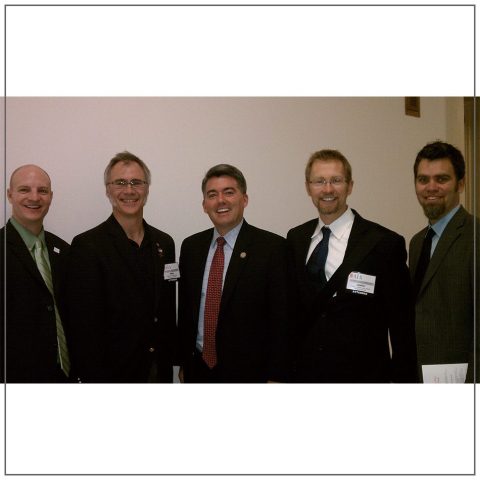The American Institute of Architects has an ongoing program to reach out and connect with the American public. As VFLA supports the AIA leaders, such as VFLA CEO Justin Larson, AIA who is the current president of the AIA Colorado North Chapter see’s importance of improving the value of the architect in the mind of the public.
‘I am bringing the viewpoint of my profession to members of my Congressional delegation, who have an abiding interest in the things that matter to the architectural and construction field most. Like most professionals who participate in the construction sector, architects have seen tough times since the real estate bubble burst at the end of the last decade. But that doesn’t make the profession any less relevant, either to the economy, to policy makers or to society in general.
On Capitol Hill and in state capitols across the country, architects play an increasingly important role in determining the fate and health of small businesses, ways that homeowners and businesses can save energy and a host of other issues that directly affect the quality of life for most Americans.
On the federal front, for example, the AIA recently won a major concession for the nation’s small businesses – the biggest jobs creators in the American economy – by helping convince the Small Business Administration on February 10 to back away from a drastic increase in the size standard (based on annual revenue) under which companies can qualify for contracts. This regulation is crucial for firms which do federal work, as $190 billion of the $700 billion in contracts goes to firms that qualify as small businesses, and also those that seek financing to get started or expand.
Architects have influence over a wide variety of other issues, from your child’s educational environment to a region’s ability to recover from disasters.
Architects have a real life impact. They are frequently the lever – the impartial third party – that regulators and legislators turn to for informed information to make decisions about the future of a state’s economy, or the future of the U.S. economy. At the Washington yesterday I meet with Congressman Cory Gardner and the aids for Senator Michael Bennett.
Our meeting focused on 4 key issues:
1) Removing Barriers to Private Sector Lending, which Congressman Gardner co-authored a bill in support.
2) Saving Energy, Creating Jobs
3) Helping Small Firms Grow
4) Revitalizing America’s Neighborhoods
America’s architects are the leading edge of a design and construction industry that employs more than seven million Americans and accounts for one in nine dollars of Domestic Product. Before a single brick is laid, or a girder raised into place, an architect job making sure that the buildings we build and use are safe, healthy, efficient and beautiful. Architects are by and large small businesspeople: ninety-five percent of architecture United States employ 50 or fewer people.
Meeting the challenges our communities face – lost jobs, outdated and unsafe infrastructure, abandoned buildings and neighborhoods, rising energy costs, and distressed main streets a strong design and construction industry that is ready and able to get back to work.

